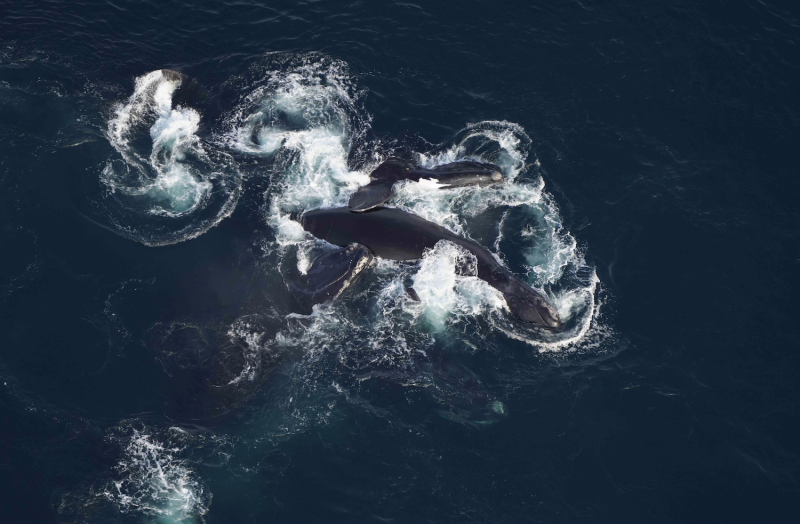The National Marine Fisheries Service withdrew a proposal to extend the East Coast speed limit rules protecting endangered North Atlantic right whales to smaller vessels under 65’ length, citing “numerous and ongoing requests from the public” to review it.
NMFS officials say the original proposal in August 2022 drew some 90,000 public comments, and the agency does “not have sufficient time to finalize this regulation.” Speed regulations on large ships have been in effect since 2008, and NMFS has proposed extending the 10-knot limit when whales are known to be present to include vessels 35’ to 65’.
Environmental and wildlife advocacy groups lobbied for the change, pointing to incidents when adult whales and calves were apparently struck by smaller vessels. NMFS estimates the North Atlantic right whale population at little more than 370 animals, and said the proposal “was intended to further reduce the likelihood of mortalities and serious injuries.”
NMFS was prodded by a petition originally submitted by Center for Biological Diversity, Defenders of Wildlife and Whale and Dolphin Conservation in 2012, and revived in 2020 with the Conservation Law Foundation.
When the agency did not move forward the groups filed a lawsuit in federal court in 2021, and emergency petitions in 2022 and 2023, specifically seeking speed limit measures in right whale calving areas off the southeast U.S. states.
“The gross inaction and delays by this administration over the past four years to release this rule is inexcusable,” said Erica Fuller, senior counsel at the Conservation Law Foundation. “We exhausted every avenue available to us to move this forward as the right whale body count from vessel strikes continued to grow.”
“Accidental entanglements in fishing gear and vessel strikes are listed as the primary threats to North Atlantic right whales,” said Regina Asmutis-Silvia, executive director of Whale and Dolphin Conservation, “but their actual greatest threat is political inaction and that is what will drive them to extinction.”
“The rule’s many blind spots would have created dire consequences for boater safety and accessibility, the economic vitality of coastal communities and marine manufacturers, and the livelihoods of countless supporting small businesses, all while undermining years of progress in marine conservation,” said Hugelmeyer.
Maritime business advocates say they are looking for technology to help reduce the danger of vessel strikes.
“We hope that the withdrawal of this rule will provide the industry with the opportunity to work with the federal government to develop and invest in technological solutions to ensure that recreational boaters and anglers can co-exist with marine mammals while on America’s oceans, protecting both access to our marine resources and endangered aquatic species,” said Matt Gruhn, president of the Marine Retailers Association of the Americas.







